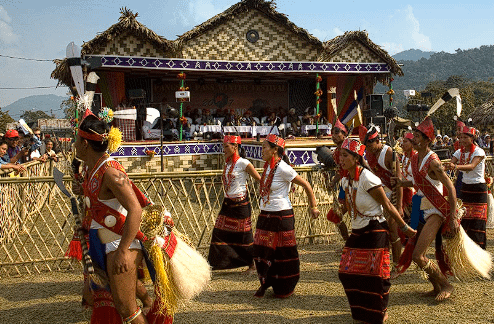The Pangsau Pass International Festival (PPIF) 2025, held in Arunachal Pradesh, celebrates the region’s cultural heritage and its historical significance during World War II. Chief Minister Pema Khandu announced plans to enhance tourism by restoring World War II remnants in Nampong, denoting the festival’s role in promoting economic growth and cultural exchange. This year’s festival coincides with the 80th anniversary of the war’s conclusion.
Key Facts about Pangsau Pass
Historical Significance
Nampong is a key site for World War II history. The region served as important supply route for Allied forces. Key locations include the Stilwell Road and the Lake of No Return, both tied to wartime events.
World War II Cemetery
The Jairampur cemetery, discovered by Assam Rifles in the 1990s, contains over 1,000 graves. It is the largest World War II cemetery in India, spanning three acres. It serves as a poignant reminder of the war’s impact.
Tourism Development
The state government plans to restore war remnants to boost tourism. Initiatives include improving infrastructure and connectivity in the Tirap, Changlang, and Longding districts. This aims to attract more visitors to the region.
Cross-Border Cultural Exchange
During the festival, visitors can cross into Myanmar without passports. This encourages cultural exchange and trade between the two nations, enhancing community ties.
International Participation
The festival attracted a 150-member delegation from Myanmar, promoting mutual cooperation and cultural exchange. Events at the festival highlight shared histories and encourage relationships between communities.
Memorialisation Efforts
A tank from the war has been installed at the cemetery entrance, symbolising remembrance. The festival encourages visits to sites of historical significance, enhancing awareness of the region’s wartime legacy.

Leave a Reply